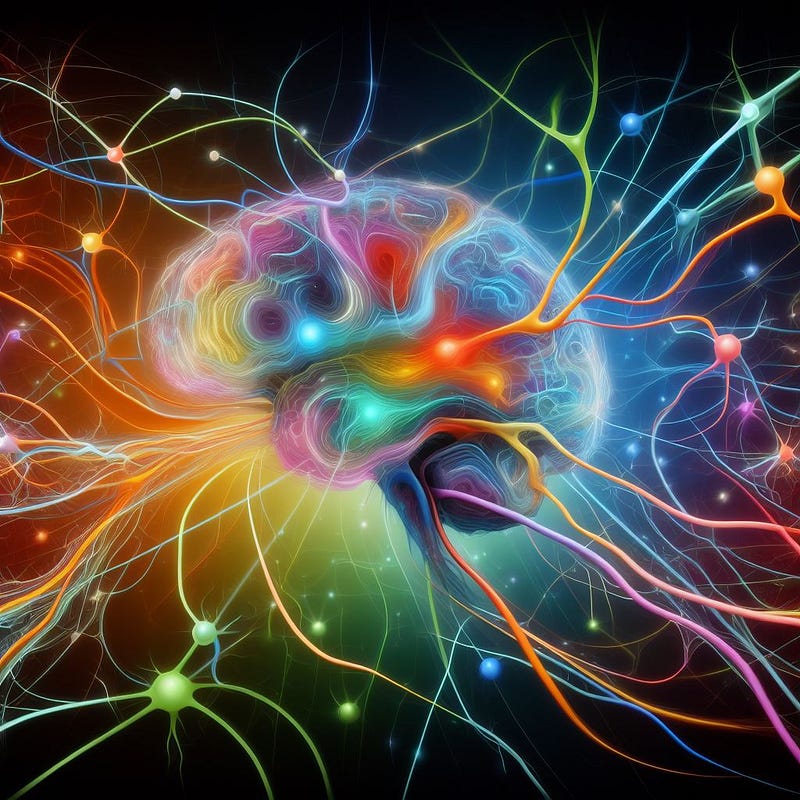Mastering Focus: A Comprehensive Guide to Dopamine Detoxification
Written on
Chapter 1: Understanding the Dopamine Challenge
In today's world, distractions are everywhere, and the idea of dopamine detoxification has emerged as a powerful strategy to reclaim focus and enhance productivity. Andrew Sweeney's book, "Dopamine Detox: A Short Guide to Remove Distractions and Get Your Brain to Do Hard Things," serves as a practical manual to help individuals regain control over their attention and concentrate on more significant tasks. The book delves into the science behind dopamine, its impact on behavior, and offers practical methods to minimize distractions.
The initial concept introduced in the book is the dopamine dilemma. Dopamine is a neurotransmitter associated with pleasure and reward, playing a crucial role in the brain's reward system. In our current environment, we are bombarded with dopamine-inducing stimuli, such as video games and social media, which can lead to addiction and divert us from essential goals. Sweeney emphasizes the importance of addressing this dilemma to regain control over one's life.
Section 1.1: The Science Behind Dopamine
To grasp the concept of dopamine detox, it is vital to understand the science of dopamine. Sweeney provides a clear overview of dopamine's physiological role in the brain, discussing its influence on motivation, reward, and pleasure, as well as its connection to habit formation. The techniques outlined in the book are grounded in this scientific understanding.
Subsection 1.1.1: Recognizing Dopamine Triggers
Sweeney highlights the necessity of identifying personal dopamine triggers—those activities that provide a rush of dopamine and distract from more critical tasks. Common triggers include social media, video games, and junk food, but these can vary significantly for each individual. He guides readers through the process of pinpointing their unique triggers to create a tailored detox plan.

Section 1.2: Crafting Your Dopamine Detox Plan
The core focus of Sweeney's book revolves around implementing a dopamine detox regimen. He lays out a structured approach to liberate oneself from indulgent dopamine-producing activities, which includes three main stages:
- Dopamine Fast: The initial step involves temporarily abstaining from highly stimulating activities. Sweeney recommends starting with a 24-hour dopamine fast and gradually extending it.
- Reintroducing Activities: After the fast, individuals can resume their usual activities but should do so mindfully, establishing boundaries and guidelines for engaging in dopamine-inducing pursuits.
- Deep Work Engagement: The final phase encourages readers to immerse themselves in deep work, focusing on challenging yet rewarding tasks that require concentration and effort. Sweeney shares strategies to enhance one's ability to engage in this kind of work.
Chapter 2: The Role of Mindfulness
Mindfulness plays a crucial role in the detoxification process. Sweeney asserts that mindfulness can help individuals become more aware of their actions and thought processes. He suggests journaling and other mindfulness practices as tools for fostering self-awareness and self-control. Those who practice mindfulness tend to manage their impulses more effectively and make intentional choices.
Chapter 3: The Importance of Routine
Consistency is vital for a successful dopamine detox. Sweeney discusses the significance of establishing a daily routine to maintain discipline and focus. He provides practical tips for structuring one's day, such as allocating specific times for work, leisure, and rest. A well-organized schedule can help individuals avoid distractions and stay on track.
Chapter 4: The Social Dimension of Dopamine Detox
Sweeney explores the social aspects of dopamine detoxification, acknowledging the influence of peer pressure and social relationships on behavior. He offers advice on how to communicate detox goals to friends and family and seek support from those with similar ambitions. Building a supportive social network can ease withdrawal symptoms.
Chapter 6: Tracking Progress and Success
To maintain motivation during the detox process, Sweeney encourages monitoring and celebrating achievements. He advises setting specific, measurable goals for productivity and focus. These goals can inspire individuals by allowing them to track their progress and recognize their successes.
Chapter 7: The Ongoing Journey
In conclusion, Sweeney emphasizes that dopamine detoxification is an ongoing journey rather than a one-time solution. He encourages readers to regularly assess their routines and make necessary adjustments. The ultimate aim is to cultivate a balanced relationship with dopamine-inducing activities, enabling individuals to concentrate on and pursue meaningful objectives.
A summary of the key concepts from "Dopamine Detox" by Thibaut Meurisse.
Insights from the book "Dopamine Detox" by Thibaut Meurisse, exploring strategies for improved focus and productivity.
Conclusion:
Andrew Sweeney's "Dopamine Detox: A Short Guide to Remove Distractions and Get Your Brain to Do Hard Things" offers a concise yet powerful framework for tackling the modern challenge of overwhelming distractions. The book clearly outlines the science of dopamine and its impact on our ability to focus and achieve our goals.
Access the book here: “Dopamine Detox: A Short Guide to Remove Distractions and Get Your Brain to Do Hard Things”